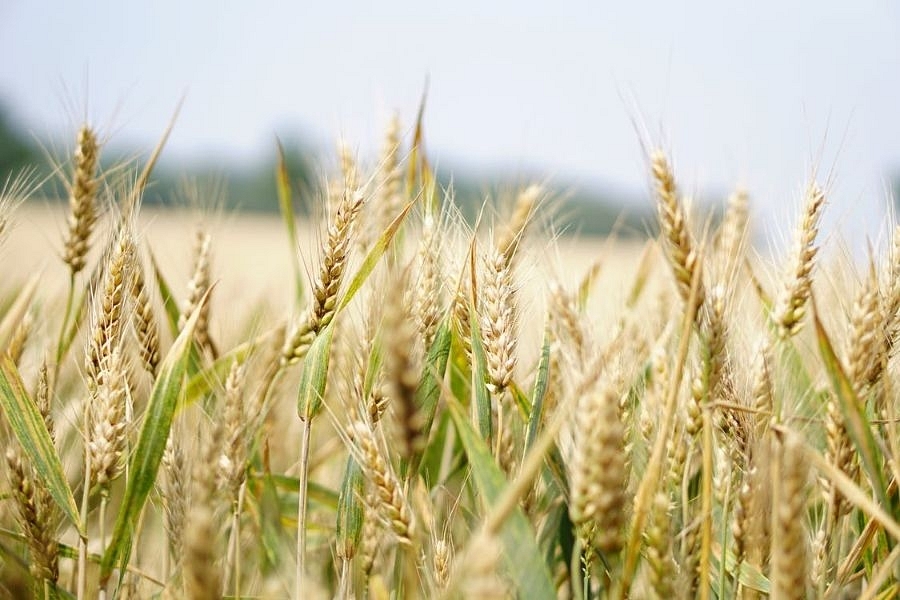World
Governments Across The World Turn To Food Protectionism As Fuel, Food, Fertiliser Prices Go Through The Roof
- Prices of essential food items such as cereals, pulses, and oils have continued rising as the food sector faces supply chain issues, shortages, and protectionist government policies.

Wheat field (PC: Pexels)
Prices of essential food items such as cereals, pulses, and oils have continued rising as the food sector faces supply chain issues, shortages, and protectionist government policies.
Due to the boom in oil and gas prices and a subsequent shortage in fertilisers, global governments had initially introduced four restrictions on the export of fertilisers and food items. However, after the invasion of Ukraine, there have been 53 more restrictions have been implemented by governments across the world. Of these, 31 restricted exports, while nine were focused on restricting wheat exports.
Ukraine and Russia are key suppliers of several essential commodities. Ukraine has been unable to export its commodities and has restricted exports in some commodities such as meat, rye, oats, buckwheat, corn sugar etc. Russia, too has implemented export curbs on several commodities such as sunflower seeds and wheat.
Over the last week, the prices of edible oils increased in India after Indonesia, a large exporter of edible oils, decided to implement a ban on exports. Over the years, India has lost its self-sufficiency in oil and is mainly dependent on external oil sources – resulting in a high import bill. It exposes India to the vagaries of policy-making in other countries as well.
However, India isn’t the only country facing oil shortages. The United Kingdom is rationing edible oil in supermarkets, while sunflower oil has disappeared from the supermarkets.
While oil inventories are lying in Ukraine, there is no easy way to export the stored oil to other nations. Fast-moving consumer goods companies are already feeling the heat due to the ban on palm oil exports, as their gross margins remain under pressure. The global index which tracks vegetable oils has moved from just under 100 points in 2018 to 250 in 2022 – indicating the severity of the supply-demand mismatch in the sector.
As mentioned earlier, wheat exports from Russia have been curbed, while countries like Kazakhstan have implemented new measures to curb wheat and flour exports. These curbs combined with a fertiliser shortage, higher transportation costs and poor harvest in several areas have meant that countries deficient in food production are likely to struggle. For instance, north African countries that are unable to meet food demand through domestic production are now struggling to find enough wheat to feed their citizens.
While the current crisis continues, another crisis could be looming in the future. In addition to crops being left un-harvested, the low to no farming and replanting in some areas of Ukraine would lead to lower supply.
The ban on fertiliser exports by key suppliers such as China and Russia is another area of concern, as the lower supply of fertilisers to farmers could lead to a lower plantation in countries dependent on fertilisers.
Governments are forced to implement bans to control the local prices of the commodities. Countries like Lebanon are left with only a month or two worth of wheat supply, making it crucial to sustain these resources if the geopolitical crisis continues. The government’s implementing these rules cite the World Trade Organisation’s rules that allow the implementation of such restrictive trade terms for national security or safety. These measures do help pacify the masses and keep prices artificially low for some time. However, excessive government intervention in the flow of trade usually has certain negative impacts over the long term.
In the shorter term, countries across the globe are likely to face higher inflation as prices of food continue rising unabated. Food inflation has begun accounting for a significant proportion of inflation in several countries. According to India’s Economic Survey for 2021-2022, oil and fats were responsible for 60 per cent of the food inflation in India, despite a weightage of around 7.8 per cent in the basket. Similarly, prices of pulses increased by 13.25 per cent in March. Unless governments receive assurance that the prices of commodities wouldn’t continue to rise higher, the trend of export curbs is likely to continue.
Support Swarajya's 50 Ground Reports Project & Sponsor A Story
Every general election Swarajya does a 50 ground reports project.
Aimed only at serious readers and those who appreciate the nuances of political undercurrents, the project provides a sense of India's electoral landscape. As you know, these reports are produced after considerable investment of travel, time and effort on the ground.
This time too we've kicked off the project in style and have covered over 30 constituencies already. If you're someone who appreciates such work and have enjoyed our coverage please consider sponsoring a ground report for just Rs 2999 to Rs 19,999 - it goes a long way in helping us produce more quality reportage.
You can also back this project by becoming a subscriber for as little as Rs 999 - so do click on this links and choose a plan that suits you and back us.
Click below to contribute.
Latest